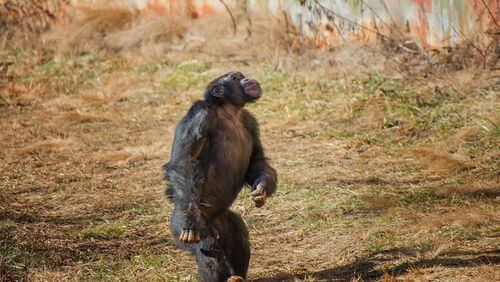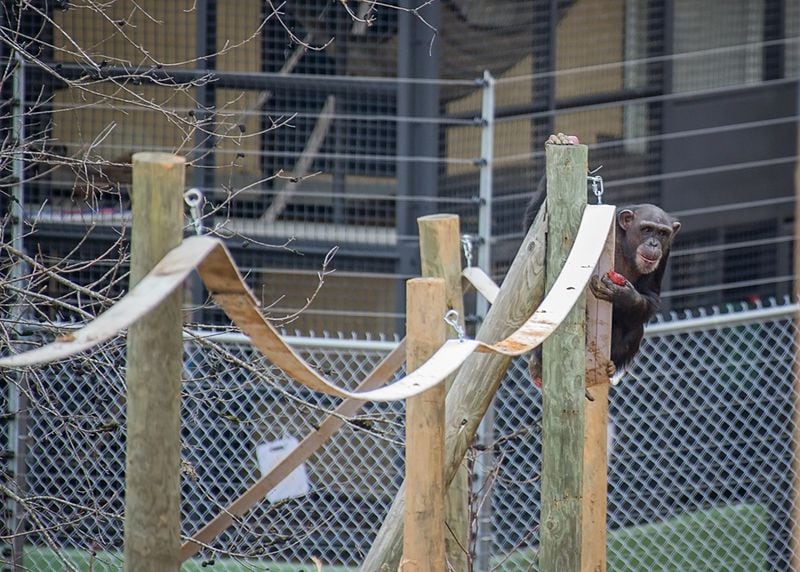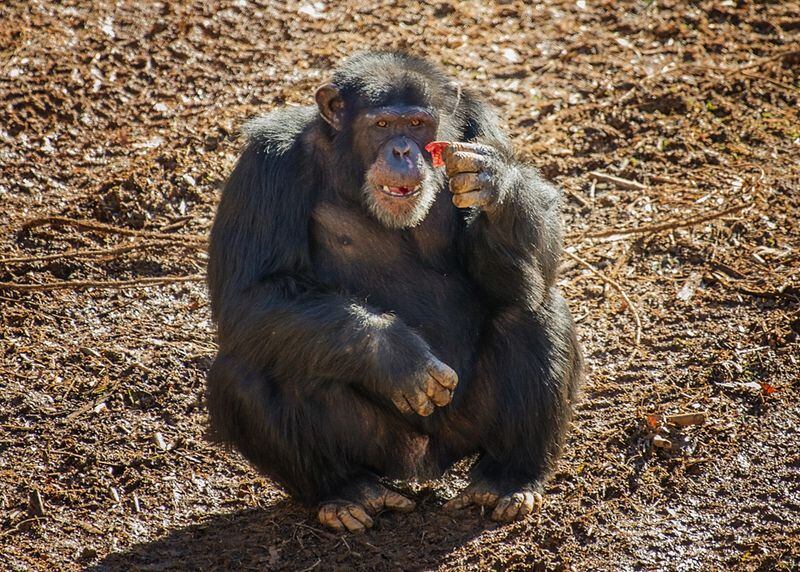With reactions ranging from excitement and curiosity to fear and trepidation, 15 former lab chimps took their first steps outdoors this week at the Project Chimps sanctuary in North Georgia.
The 236-acre sanctuary is currently home to 31 chimpanzees who have spent their entire lives in captivity as subjects used in biomedical research.
RELATED: North Georgia sanctuary ultimately will take in more than 200 'retired' chimpanzees
On Tuesday, with the completion of the Peachtree Habitat -- a six-acre, forested habitat at the sanctuary-- nine females and six males ranging in age from 11 to 27 ventured out in two gender-separated groups to frolic and forage for food just as they would in the wild.
It was the first time they had the chance to exercise their free will with regard to their environment, said Ali Crumpacker, executive director of Project Chimps.
“Imagine never having stepped outside your own home and only knowing carpet or your porch under your feet. That’s what it was like for these chimps,” she said.
The males were out for approximately 90 minutes. The female group stayed out for about 45 minutes.
One lower-ranking female chimp, Emma, did not go out with her group initially, but later spent 40 minutes outside on her own.
With temperatures in the 30-degree range, almost all of the chimps took the opportunity to wander around outside. They sounded alarm calls and pant hoots and hugged one another for reassurance.
They did not attempt to climb trees while outdoors, but they did forage for pomegranates and other foods that caregivers had placed outside to encourage the chimps to explore.
The chimps were not allowed outside on Wednesday as temperatures dropped and snow rolled into North Georgia, but they watched as snowflakes started to fall and they caught snow in their fingers while standing on the enmeshed outdoor porch areas attached to their indoor villas.
Over the next few weeks, the chimps will be on an outdoor rotation schedule in their current social groupings (two groups of males and two groups of females). In the course of several months, caregivers will work to expand the chimps’ social groups by introducing them to one another.
The ultimate goal is to replicate the same social structures they would have in the wild, so they will also be able to exercise free will about who they associate with in the larger group.
In 2015, Project Chimps purchased the former gorilla sanctuary near Blue Ridge and began developing a campus to provide lifelong care for more than 200 chimps retired from the University of Louisiana’s New Iberia Research Center (NIRC).
The first chimps arrived in 2016. NIRC has plans to move the remaining population of chimps to the sanctuary in phases with about 20 additional chimps expected during the first half of 2018.
As the newest chimpanzee sanctuary in the United States, Project Chimps features several housing villas, a state-of-the-art veterinary clinic, and a kitchen made possible by celebrity chef, Rachael Ray.
There are plans to build three additional outdoor habitats which will feature companion indoor/outdoor housing to accommodate the growing population and more time spent outdoors.









